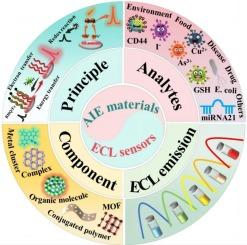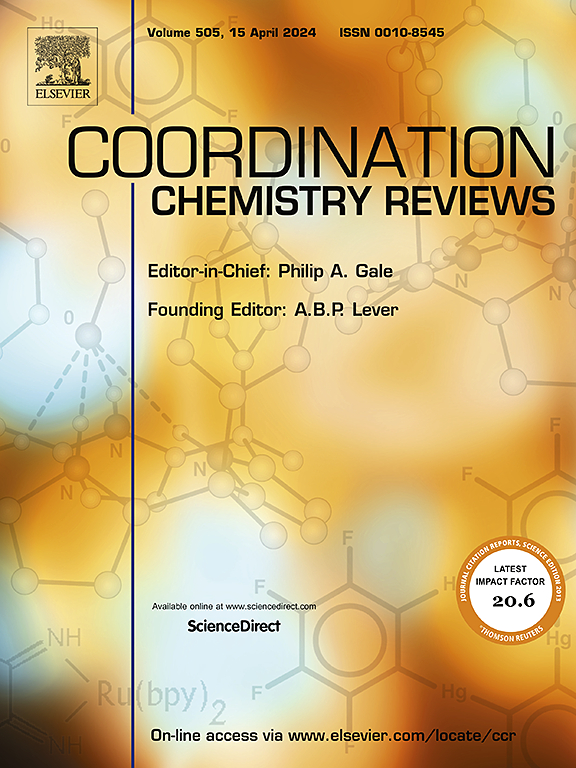Aggregation-induced emission materials-based Electrochemiluminescence emitters for sensing applications: Progress, challenges and perspectives
IF 20.3
1区 化学
Q1 CHEMISTRY, INORGANIC & NUCLEAR
引用次数: 0
Abstract
Design and development of electrochemiluminescence (ECL) sensors with high sensitivity and selectivity for analytes quantitative detection plays an important role in monitoring food/environmental safety and preserving human health. Aggregation-induced emission (AIE) materials feature higher luminescence in aggregated state than in dissolved state and hence are considered as ideal emitters to develop high-performance ECL sensors. Enlightened by this, researchers around the world have made considerable efforts to devise and synthesize AIE materials with unique ECL performance for reliably analyzing disease biomarkers and toxic substances with high sensitivity. In this review, we outline the recent advances on devise and preparation of AIE materials with different components exhibiting unique ECL property, and development of AIE materials-based ECL sensors for sensitive detection of nucleic acids, proteins, amino acids, metal ions, anions, etc. Further, the confronting hurdles and perspectives on the future of such ECL sensors were briefly discussed to give the researchers a little inspiration for developing higher-performance sensors. Moreover, we hope this overview will not only facilitate the huge progress of AIE materials-based ECL sensors, but also boost the commercial application in real-life scenarios in the future, truly serving the general public.


求助全文
约1分钟内获得全文
求助全文
来源期刊

Coordination Chemistry Reviews
化学-无机化学与核化学
CiteScore
34.30
自引率
5.30%
发文量
457
审稿时长
54 days
期刊介绍:
Coordination Chemistry Reviews offers rapid publication of review articles on current and significant topics in coordination chemistry, encompassing organometallic, supramolecular, theoretical, and bioinorganic chemistry. It also covers catalysis, materials chemistry, and metal-organic frameworks from a coordination chemistry perspective. Reviews summarize recent developments or discuss specific techniques, welcoming contributions from both established and emerging researchers.
The journal releases special issues on timely subjects, including those featuring contributions from specific regions or conferences. Occasional full-length book articles are also featured. Additionally, special volumes cover annual reviews of main group chemistry, transition metal group chemistry, and organometallic chemistry. These comprehensive reviews are vital resources for those engaged in coordination chemistry, further establishing Coordination Chemistry Reviews as a hub for insightful surveys in inorganic and physical inorganic chemistry.
 求助内容:
求助内容: 应助结果提醒方式:
应助结果提醒方式:


